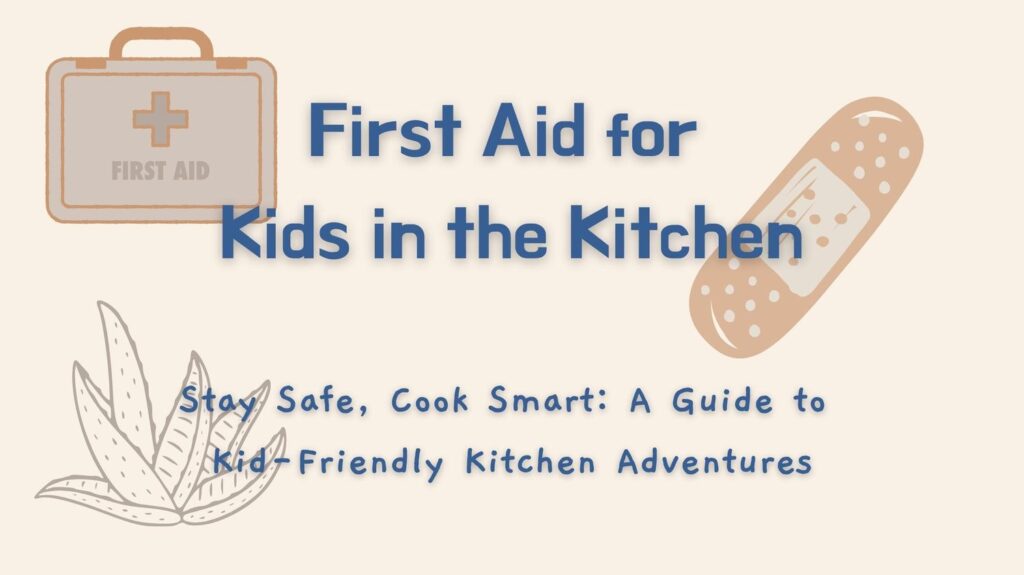We recommend products we would use ourselves and all opinions expressed here are our own. This post may contain affiliate links, which means we might make a small commission at no extra cost to you. This helps us keep the blog running. See our full disclosure here.
Cooking is a wonderful way to foster a child’s culinary curiosity and develop valuable life skills. Knife safety for kids in the kitchen is important but it doesn’t have to be daunting. Age-appropriate knife skills, safety tips, and proper use of kitchen tools can create a secure and enjoyable kitchen experience for children.
Safe Handling of Utensils with Kids
It is important to teach your children to safely handle knives and other sharp utensils when helping in the kitchen. The more experiences you and your child have with sharp items in the kitchen, the more comfortable you both will be. Make sure to vocalize the consequences of not handling kitchen equipment safely. Show your child some basic handling skills like the ones below so they can safely handle knives.
Check out my other articles on kids in the kitchen for more ways to empower your child to learn basic life skills. Along with this article on knife safety for kids, I also have articles on appropriate kids’ kitchen tasks, fire safety and awareness, and more.
Basic Knife Safety For Kids
Ensure your child knows to use a cutting board and place the knife away from them at the back of the board when they not using it.
Teach your child to use a claw to keep their fingers away from the blade.
Show them the proper cutting motion for different knife types. Use a nylon glove with kids while they are getting started with cutting.
Watch this YouTube video on basic knife skills with your child. It demonstrates the proper handling of knives.
Encourage your children to use kid-friendly kitchen tools when possible. Safety when handling knives, peelers, and graters is paramount when teaching children to cook.
Here’s an age-appropriate cutting tools and knives for kids chart:
| Age Group | Safe Cutting Tools |
|---|---|
| 2-4 years | – Crinkle/wavy cutters |
| – Butter knives (with supervision) | |
| – Plastic lettuce knives (with supervision) | |
| 4-6 years | – Plastic serrated knives (with supervision) |
| – Nylon kid-friendly knives (with supervision) | |
| – Standard vegetable peelers (with supervision) | |
| 7-9 years | – Small paring knives (with supervision) |
| – Blunt-tipped chef’s knives (with supervision) | |
| – Mini or child friendly cheese graters (with supervision) | |
| – Cutlery knife and fork together to cut their food | |
| 9-12 years | – Box graters with supervision |
| – Lettuce knife | |
| – Pairing/Utility knife | |
| 13+ years | – Regular chef’s knives (with supervision) |
Knife Safety Tips for Your Child
- Choose Age-Appropriate Knives: Start with plastic or nylon knives for younger children. Gradually introduce them to blunt-tipped chef’s knives as they gain confidence and skills.
- Proper Grip: Teach them the importance of holding the knife with a firm, yet not overly tight grip. Their fingers should be away from the blade.
- Safety Ring: Consider using knives with safety rings that help prevent fingers from slipping onto the blade.
- Supervision: Always supervise when children use knives. Demonstrate safe cutting techniques, such as the “bear claw” grip for holding food.
- Control: Teach children to keep their fingers as far away from the blade as possible while holding the food firmly in place. Frequently remind them to look down to ensure their fingers aren’t under the knife.
- Remember to Set Knife Down: Kids can get distracted easily, so make it a habit to have the child set the knife down (facing away and not at the edge of a counter) every time they complete a task so they do not forget they have it when they start to talk or look around. Remind them often!
Peeler/Grater Safety Tips for Your Child
- Choose Age-Appropriate Tools: Begin with plastic or smaller, safer peelers and graters designed for kids. Progress to standard peelers and box graters as they mature.
- Hand Position: Emphasize the importance of holding the peeler or grater correctly, with fingers tucked safely away from the blade. Tell them what will happen if they get their fingers too close to the grater when grating.
- Steady Surface: Teach them to use a stable cutting board or surface when peeling or grating.
- Supervision: Always supervise children when they’re using peelers or graters, especially when they transition to adult-sized tools.
- Safety Rules: Reinforce safety rules, such as never rushing, keeping fingers away from the blades, and avoiding distractions.
By gradually introducing safe tools and providing clear guidance, children can learn valuable kitchen skills while minimizing the risk of accidents.
By providing age-appropriate tasks, emphasizing safety, and nurturing their culinary curiosity, not only are you teaching valuable life skills but also creating cherished moments in the heart of your home. So, roll up your sleeves, grab your aprons, and let’s continue to cook, learn, and grow together. Happy and safe cooking!
More Kitchen Advice for Kids









